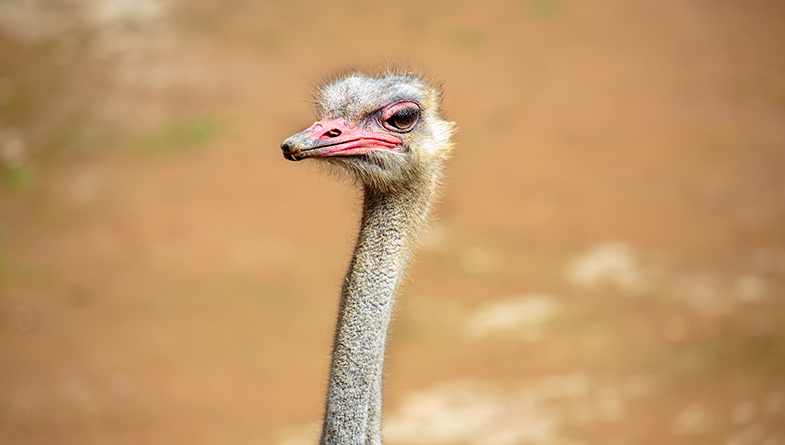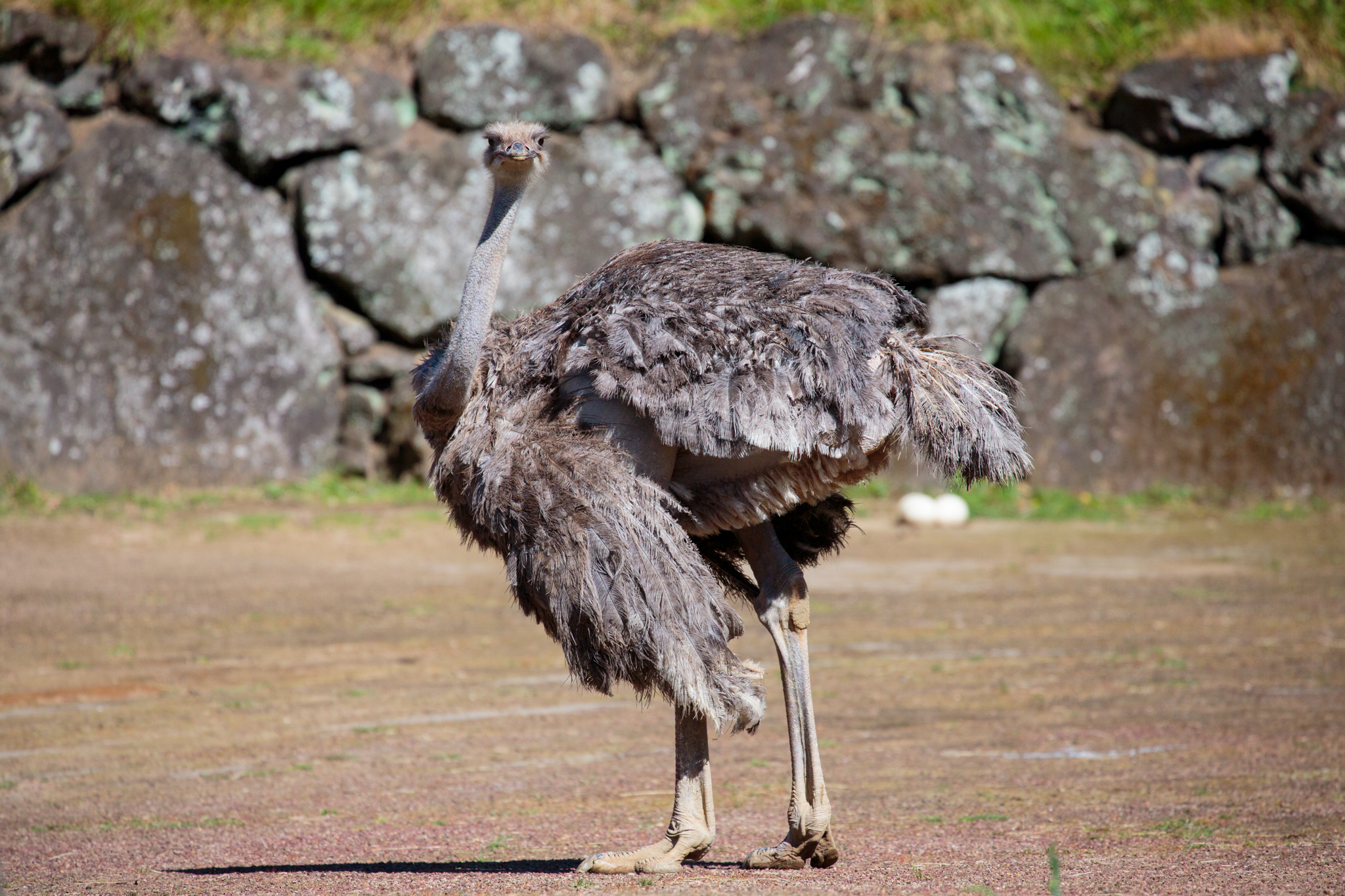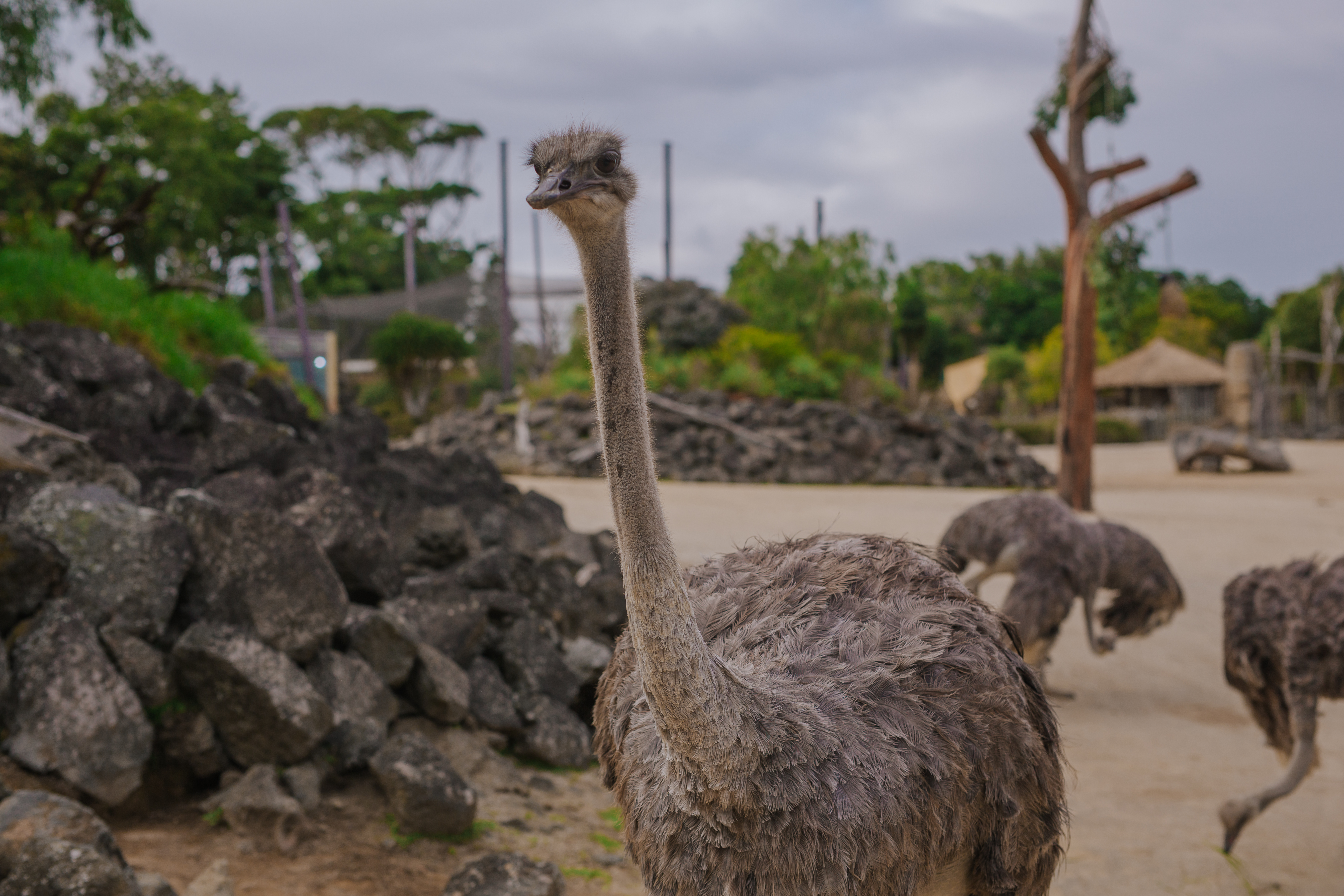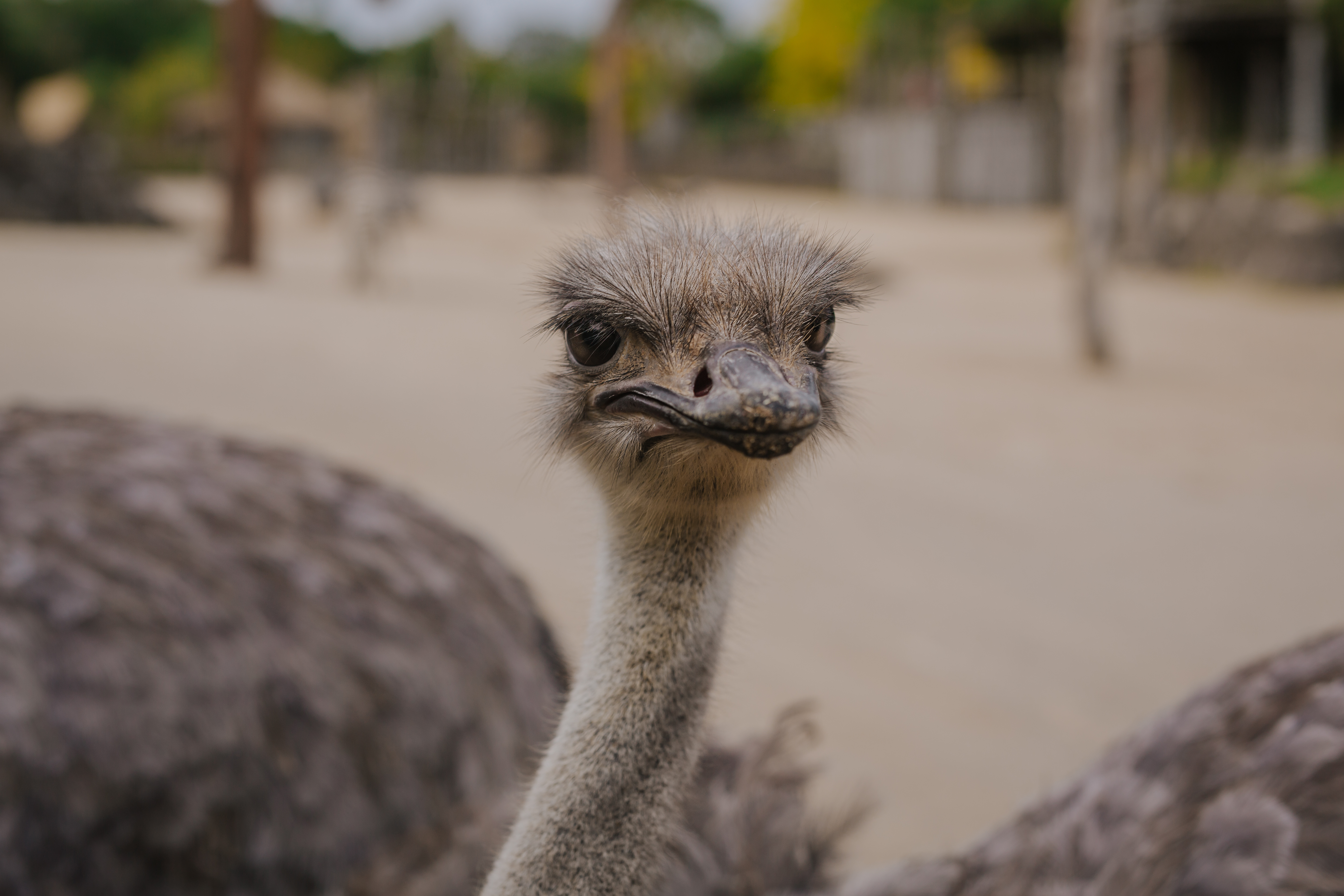Get your head out of the sand
It’s fairly easy to spot the difference between male and female ostriches. Male ostriches are black with white feathers on the tips of their wings and tail, while females are grey-brown. But why is that? It is thought that the difference in colour helps provide good camouflage while they are sitting on a nest. Males will predominately sit on the nest at night and the females during the day.
Ostriches lay their eggs in a mutual nesting system. A male ostrich will prepare several nests within his territory. A dominant female will choose a preferred nest to lay her eggs. Other females will also lay eggs in the same nest – sometimes up to 60 eggs can be in the same nest. The nest is left unattended for up to 2 weeks, which can be a huge risk as a pile of large white coloured eggs can be an easy target for predators.
However, it is thought that the lighter coloured eggs help with temperature control while they are exposed to the elements. After the initial 2 weeks, the dominant female and male will sit on the nest to incubate the eggs. During this time, many of the eggs may be ejected from the nest. It is unknown if the female can recognise her own eggs and rejects others or if it is completely random. Eggs are ejected from the nest as an ostrich can only incubate around 20 eggs at once. It is also thought that some of the eggs are ejected as a predator mitigation technique – sacrificing some eggs outside the nest as easy targets, can help protect the main nest.
Ostriches don't actually bury their heads in the sand like rumoured. But if predators are near a nest site where an ostrich is sitting, the ostrich will attempt to hide by lying low to the ground and stretching its long neck along the ground. The ostrich uses its feather colouration to camouflage into its surroundings. From a distance they may just look like a rock!








